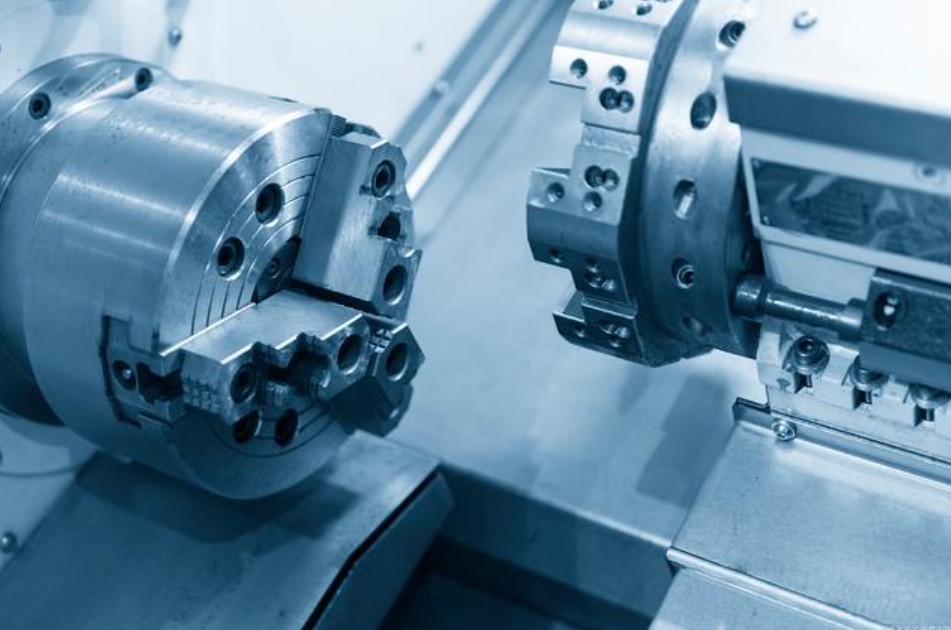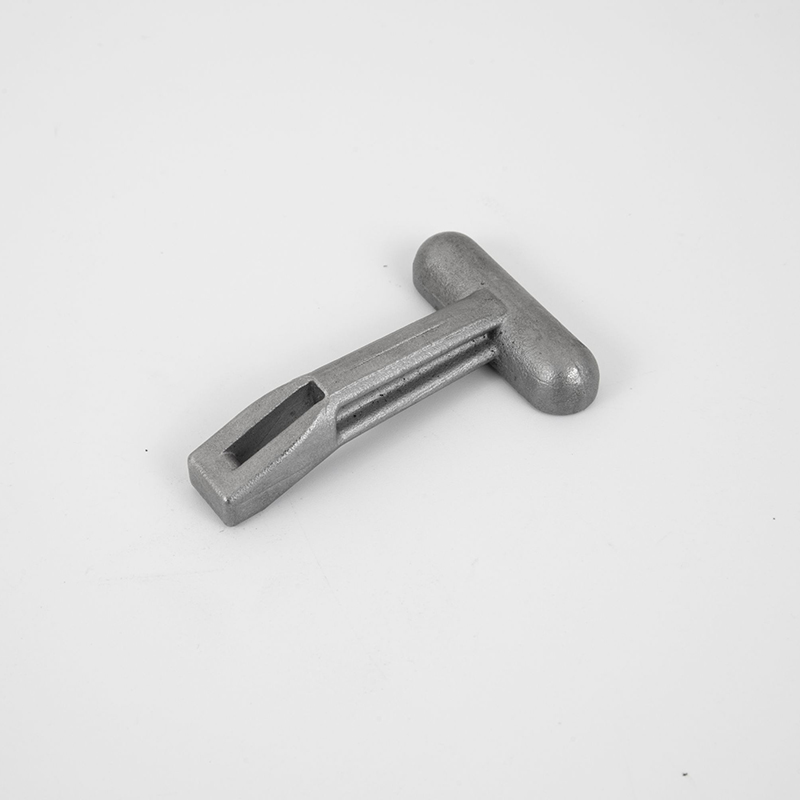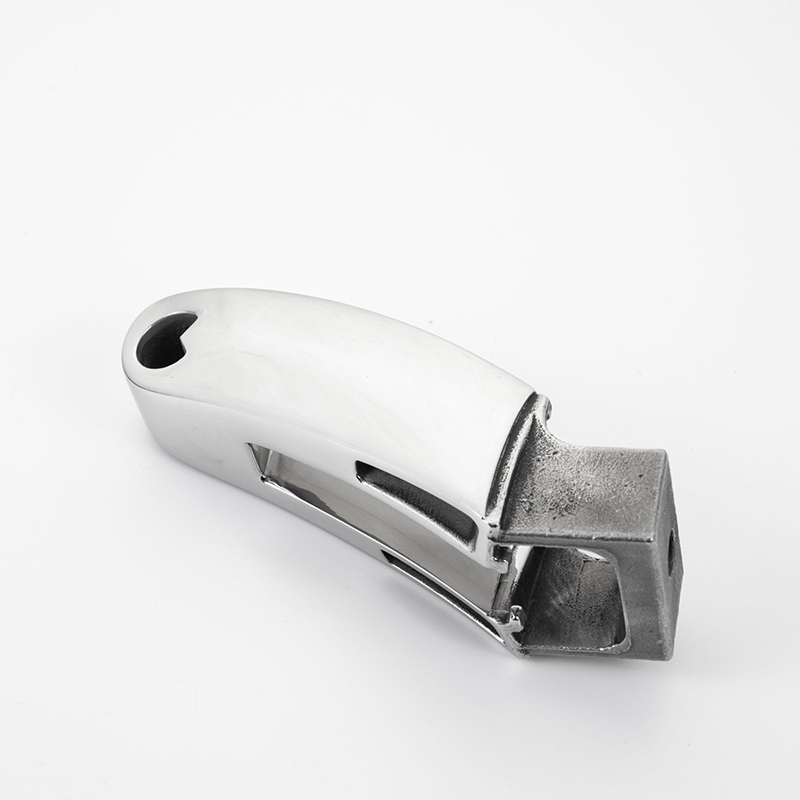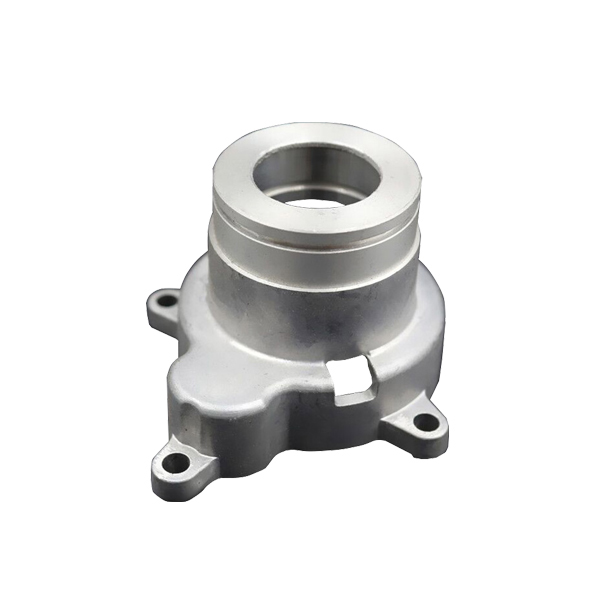Products
Turning Machining
What is CNC Turning Machining?
You can rest assured to buy CNC Turning from our factory and we will offer you the best after-sale service and timely delivery.
CNC turning, also known as Computer Numerical Control turning, is a modern machining process used to create cylindrical components by removing material from a workpiece. It involves the use of computer-controlled machines, typically lathes, to precisely shape the workpiece according to programmed instructions. The cutting tools are guided by the computer control system to achieve high levels of accuracy and efficiency. CNC turning is widely utilized in manufacturing for its ability to produce custom parts with tight tolerances and repeatability, making it suitable for a variety of materials and production volumes.

How Does CNC Turning Work?
1. Confirm the Geometry and Size of The Workpiece
Before commencing the turning process, it is essential to verify the geometry and dimensions of the workpiece in accordance with the provided CAD drawings. This involves confirming details such as the diameter, length, surface finish requirements, machining tolerances, and other relevant parameters of the workpiece.

2. Choose The Right Turning Tool
During the CNC turning process, manufacturers must carefully choose a tool that is appropriate for the material and geometry of the workpiece, considering factors such as cutting edges, angles, and hardness. Simultaneously, they must establish the process parameters, including rotational speed, feed rate, cutting depth, and other relevant settings.

3. Adjust The Movement Shaft of The Lathe
Prior to commencing the turning process, it is essential to calibrate the different movement axes of the lathe, including the longitudinal feed shaft, transverse feed shaft, and main shaft. This adjustment is crucial to ensure that the turning tool can accurately cut the workpiece in the intended position and direction.
4. Parameter Setting of Cutting Process
Based on the workpiece material and specific machining needs, we predefine the lathe speed, feed rate, cutting depth, and other parameters to achieve the desired machining outcome. This proactive approach ensures that the machining process aligns with the intended requirements and results in the expected quality and precision.
5. Turning Process
During the turning process, it is essential to maneuver the turning tool along the axial and transverse axes of the workpiece to perform cutting or grinding operations. It is important to maintain a minimal contact gap between the turning tool and the workpiece surface to ensure precise and effective cutting.
6. Inspection
Upon completion of the turning process, Keming Machine Shop conducts a thorough inspection of the workpiece to verify compliance with specified parameters, including dimensions, shape, and surface finish. This inspection also aims to identify any defects, deformations, or other issues that may have arisen during the machining process.
Let’s consider the CNC turning of a shaft part as an example. It’s crucial to analyze the structural characteristics, size specifications, and potential machining challenges of the part. Given the stringent surface roughness requirements, we opt for high-speed steel tools to facilitate high-speed cutting. In practice, we begin by securing the workpiece on the CNC lathe and then configuring the appropriate cutting speed, feed rate, and cutting depth. Subsequently, the CNC system is initiated to set the turning tool in motion along the predetermined path. Throughout the machining process, continuous adjustments to the cutting parameters are made to uphold a balance between cutting quality and efficiency. Finally, a comprehensive analysis of the machining outcomes allows us to ascertain whether the part’s dimensional accuracy and surface roughness align with the design specifications.
Types of CNC Turning Operations
Straight Line Turning
Linear turning is a machining process that employs cutting tools to uniformly reduce the diameter of the workpiece. This technology is specifically engineered to achieve a predetermined thickness of the material. By swiftly eliminating a portion of the material, it effectively prevents alterations in the product’s diameter. This process is occasionally termed as rough machining and necessitates subsequent machining to attain dimensional accuracy.
Knurling
This operation entails creating irregular, angled, or intersecting patterns on the surface of the workpiece through machining. The resulting pattern typically enhances grip by increasing friction. It is particularly well-suited for producing bolts and nuts intended for threaded holes. It’s important to highlight that this operation may necessitate the use of a specially designed knurling tool.
Segmentation
Segmentation is a machining technique that involves using a single-point cutting tool to create a deep groove in the material, effectively removing internal sections. As the name implies, this process results in the production of separate parts or the cutting off of sections from the original material.
Taper Turning
Taper turning is the process of gradually decreasing the diameter of the material from one end to the other. This is achieved through the angular movement between the material and the cutting tool, leading to a gradual transition and reduction in the workpiece diameter. Similar to other turning operations, the end result of taper turning is a cylindrical product.
Threading
Threading, as a CNC turning process, involves the cutting tool moving along the side of the material to create threads on the external surface of the workpiece. These threads consist of spiral grooves with specific lengths and spacing.
Grooving
This turning operation involves the creation of a narrow cut, or groove, in the workpiece. It entails the use of a sharp tool head to cut out a groove of the same width as the cutting tool. By utilizing a range of cutting tools, wider grooves can also be machined.
Common CNC Turning Materials
Metal:
Metal materials, such as steel, aluminum, copper, titanium, and nickel, are commonly used in CNC turning processes due to their high strength, hardness, and excellent electrical conductivity. These materials find extensive applications in aerospace, automobile manufacturing, machinery production, and other industries. When machining metal materials, it is essential to choose appropriate cutting tools and machining parameters based on the material’s hardness and strength.
Plastic:
Plastic is another prevalent material for CNC turning, widely utilized in everyday items, electronic products, communication equipment, and more. Plastic materials typically exhibit excellent wear resistance, corrosion resistance, and low density. Different types of plastics vary in strength and rigidity. When machining plastic materials using CNC turning machines, careful attention must be paid to cutting speed, feed rate, and the use of coolants.
Composite materials:
Composite materials used in CNC turning, such as carbon fiber and glass fiber, are known for their lightweight, high strength, and rigidity. They are extensively employed in aerospace, shipbuilding, sports equipment, and other sectors. Machining composite materials requires special consideration in the selection of processing tools and the control of processing parameters to prevent cracks and damage to these materials.
Advantages of CNC Turning
Precision:
CNC turning offers the significant advantage of high precision. Unlike traditional mechanical turning, which relies on manual control and is susceptible to human factors, CNC turning utilizes computer-controlled tool movement to achieve accurate machining and ensure part size accuracy.
Efficiency:
Another key benefit of CNC turning is its high efficiency. Traditional mechanical turning requires manual adjustment of tool position and speed, resulting in lower processing efficiency. CNC turning, on the other hand, leverages pre-written processing programs to enable automatic operation, significantly enhancing machining efficiency. Moreover, CNC turning can perform multiple processes simultaneously, further boosting overall efficiency.
Automation:
CNC turning is characterized by a high degree of automation. Through the computer control system, CNC lathes can achieve automatic tool changes, measurements, corrections, and other functions. This not only reduces operator labor intensity but also enhances machining stability and reliability.
Flexibility and Diversity:
CNC turning also offers flexibility and diversity. By modifying the processing program, different workpieces can be machined to meet diverse product requirements. Additionally, CNC turning can handle the machining of complex shapes, such as curves and surfaces, catering to the needs of various parts.
Limitations of CNC Turning
When evaluating CNC turning as a machining process, it’s important to consider its limitations before making a decision. CNC turning is primarily well-suited for machining symmetrical parts along the axis of rotation. However, for parts with asymmetrical shapes, alternative machining methods must be employed. Additionally, CNC turning is not suitable for parts with uneven sections, and in such cases, other machining techniques such as CNC milling are more appropriate.
Types of CNC lathes
CNC turning primarily uses lathes, but there are many types of these machines, each suited to specific turning operations. There are four main types of CNC lathes commonly used in machining projects:
Horizontal CNC lathe
These lathes cover all the standard features of a typical lathe and are used in a wide variety of industrial applications. They are particularly suitable for turning and boring operations.
Vertical CNC lathe
Similar to horizontal lathes, the main difference is how they hold the workpiece. In this case, the material is placed vertically starting from the bottom, then rotated and cut. Therefore, these machines are ideal for operations with limited space.
Horizontal turning center
A horizontal turning center is an enclosed piece of equipment that has both drilling and milling capabilities. As the name suggests, turning centers mount the tool in a horizontal orientation and gradually rotate it to cut into the workpiece, using gravity to assist in material removal.
Vertical turning center
The vertical turning center combines the characteristics of a horizontal turning center and a CNC milling machine. The design keeps the rotating chuck close to the ground to facilitate the handling of large workpieces.
Examples of CNC Turning Parts
Shaft parts:
Shafts are elongated, rod-shaped components often used in mechanical systems for power transmission and load bearing. Achieving precision and high surface quality is crucial when turning shafts, often requiring precision turning and outside diameter turning on a lathe. Shaft parts are widely used in various industries such as machine tools, bicycles, automobiles, ships, aerospace, etc.

Cylindrical parts:
Cylindrical parts are a common category in CNC turning and include components such as propellers, hydraulic cylinders, bearings, flanges, cams and cranks. Machining cylindrical parts requires expertise in selecting and adjusting lathe tools to ensure accuracy and surface quality.
Disc and sleeve parts:
Another common type produced by CNC turning includes disc and sleeve parts such as gears, connecting rods, plain bearings and pump bodies. When machining these parts, attention must be paid to the details of tool selection and machining sequence.
other parts:
In addition to the types mentioned above, CNC turning is also used to machine a variety of transmission parts, structural components and connectors, including nuts, bolts, pins and flanges. The processing requirements of these parts vary, and appropriate processing methods and tools need to be selected based on specific drawings.
In summary, CNC turning is a widely used machining method capable of producing a variety of parts. These parts are widely used in machinery manufacturing, automobile, aerospace, engineering machinery, shipbuilding and other industries.
Alternative Manufacturing Methods
CNC milling:
Similar to CNC turning, CNC milling is a subtractive manufacturing process in which a rotating tool removes material from a stationary workpiece. However, CNC milling offers greater versatility and can create complex shapes. The process is ideal for producing prototypes, molds and parts with complex designs. Unlike CNC turning, CNC milling can handle a wider range of shapes and designs, making it an ideal alternative manufacturing method for complex shapes or multi-axis machining requirements.
Investment casting:
Investment casting is a multi-step manufacturing method used to create metal parts. It involves creating a wax pattern of the desired part, coating it with a ceramic shell, and then melting the wax to leave a hollow shell. The molten metal is then filled into the shell and cools to form a solid metal part. Unlike CNC turning (a subtractive machining process), investment casting is a form of additive manufacturing. It is particularly beneficial for producing small precision parts with fine surface finishes and complex geometries that may be difficult to achieve with CNC turning.
forging:
Forging is a manufacturing process that shapes metal by applying localized compressive forces, unlike CNC turning, which removes material to achieve the desired shape. Applying pressure and heat in forging creates strong and durable parts because it aligns the metal’s grain structure, thereby enhancing its mechanical properties. The method is ideal for mass production of parts such as automotive components, aerospace components and industrial tools. No material is removed during the forging process, unlike CNC turning, which improves strength properties.
- View as
Aluminum Turning Machining
The following is the introduction of high quality Aluminum Turning Machining, hoping to help you better understand Aluminum Turning Machining. Welcome new and old customers to continue to cooperate with us to create a better future!Aluminum turning machining is a manufacturing process that is used to produce precision components from aluminum materials. Aluminum is a very popular choice for machining due to its combination of strength, lightweight and corrosion resistance, making it ideal for use in a wide range of industries, including aerospace, automotive, and electronics.
Metal Turning Machining
As the professional manufacturer, we would like to provide you Metal Turning Machining. And we will offer you the best after-sale service and timely delivery.Metal turning machining is a manufacturing process that involves using a lathe machine and cutting tools to remove excess material from a piece of metal and create a finished product with precise dimensions and desired shape. The lathe rotates the workpiece on its axis, while a cutting tool gradually shapes it, with the aim of creating the desired geometric design.
Steel Turning Machining
You can rest assured to buy Steel Turning Machining from our factory and we will offer you the best after-sale service and timely delivery.Steel turning machining is the process of removing metal from a raw piece of steel material to create a finished product using a turning lathe. The lathe is a machine tool that rotates the workpiece on its axis, while a cutting tool is used to remove excess material from the workpiece, this results in a precisely shaped piece.






